NASA briefed media on 12 January and provided the virtual-reality re-enactment of the forthcoming spacewalk above.
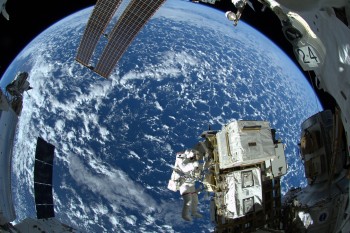
Reid Wiseman during his spacewalk 7 October 2014. Picture taken by Alexander Gerst during spacewalk. Credits: ESA/NASA
Tim Kopra will be EV1 for the spacewalk wearing a spacesuit with red stripes. Tim Peake will be EV2. Inside the Station commander Scott Kelly and cosmonaut Sergei Volkov will help the spacewalkers into their suits and the airlock and monitor their progress from inside. On Earth NASA astronaut Reid Wiseman will be their “ground IV” and guide the duo through the steps on their spacewalk. Reid conducted his own spacewalk with ESA astronaut Alexander Gerst 7 October 2014 and another a week later on 15 October 2014 to replace the Sequential Shunt Unit 3B.
The 35th NASA Extra-Vehicular Activity (EVA), or spacewalk, will see the spacewalkers replace failed Sequential Shunt Unit 1B, lay some cables and install a valve.
Preparations
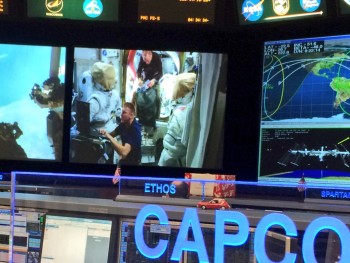
View from mission control monitoring Tim and Tim preparing the spacewalk. Tweeted by Candian astronaut David St. Jacques: https://twitter.com/Astro_DavidS/status/684740007790170113
Tim and Tim are already preparing their suits and tools for the sortie. The six-hour spacewalk needs to be thought through in detail and is choreographed minutely. Every detail, down to the order in which tools and equipment are attached to the astronaut’s suits is worked-out in advance.
On the day itself, the Tims will start “prebreathing” up to two hours before they start the spacewalk. The pressure inside their so-called EMU suits is lower than the Space Station which is pressurised at sea level. Similar to scuba divers, astronauts would suffer from the ‘bends’: quickly changing pressure can nitrogen in human bodies to turn into bubbles with serious symptoms. To avoid this, astronauts breathe pure oxygen to purge their bodies of nitrogen.
Once suited up the duo will enter the Quest airlock and being lowering the pressure. When they open the outside hatch, scheduled for 12:55 GMT, their spacewalk will officially begin.
Outside
First order is to do a ‘buddy-check’ to make all equipment is as it should be and to orient themselves in this new environment. The astronauts must always be tethered to specific Space Station supports, much like rock climbers or cave explorers.
Tim Kopra will head to the eight Sequential Shunt Units (SSU) using his arms to move along the Station’s exterior. Astronauts hardly use their legs in a spacewalk and the term ‘translating’ is used when astronauts move to a new area in space.
When Kopra gives the GO, Tim Peake will follow his colleague to the SSU with the replacement unit. Each area on the Space Station’s exterior has specific and detailed notes on where to put hands and hooks, and where fragile equipment is that must not be touched.
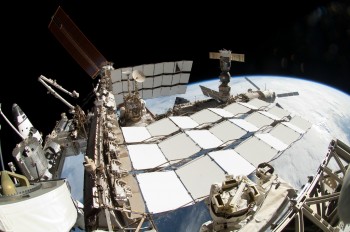
The Tims will head past the white radiators to the Solar Arrays in the background of this picture. Credits: NASA
The translation is relatively long as they will be moving over most of the Station’s length.
The SSU is a large rectangular box with electrical connectors and alignment pins. After removing the failed unit, Peake will hand the replacement to Kopra for installation. The SSUs have high-voltage electricity running through when turned so it is very important to get an exact fit. The astronauts will be counting the number of turns on the securing bolt. Peake will help with alignment and ensure a proper fit.
Once installed, ground control will perform checks and the Tims will return to the airlock to stow the failed unit for later inspection on Earth.
By this time the Tims should be almost three hours into their spacewalk.
Laying cables
At the airlock the Tims will pick up two new bags with cables to start the second part of their spacewalk. Kopra will head to his worksite to put a ‘Non Propulsive Valve’ back that was removed in a spacewalk in February 2015 to make room for a Space Station remodeling. He will also release a bolt that needs to be free for future spacecraft to dock with the Pressurised Mating Adapter.
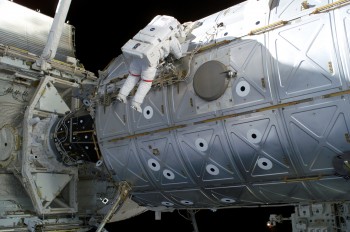
Japanese astronaut Soichi Noguchi working on Destiny laboratory during a spacewalk in 2008. Credits: NASA
Meanwhile Peake will start fixing a 28-meter cable from the Destiny Laboratory. He will stow the bag with the cable and start unrolling the cable along Destiny via Node 1 to the Z1 Truss element. The second part of this communications upgrade will see Peake plug the cable in.
Peake’s cable-laying is expected to last over three hours. When Kopra finishes with the Valve installation he will retrieve a light that has stopped working on Node2. Once onsite he needs to release the light and connector, install a protective cap and put the light into his working bag.
“Bonus tasks”
If the spacewalkers finish their tasks ahead of time, the planners at ground control have some extra tasks that could be completed so as not to waste valuable spacewalk time. These will be done by Kopra and include laying another cable and cutting some unneeded power caps that were used for when the Space Shuttle was in operation.
Back inside
All these operations will take around six hours and 20 minutes when the spacewalkers will return to the airlock. For all this time there will be no food and no toilet break. Water is supplied in a pouch with a drinking straw. The work is tiring as the astronauts fight against the pressurised suit that becomes stiff in the vacuum of space. A spacewalk is a test of patience and alertness.
Throughout the spacewalk they will check their suit and especially their gloves for wear and tear. Every 90 minutes the Space Station orbits Earth so the Tims will be continuously working 45 minutes in daylight and 45 minutes in complete darkness. The spacesuits have lights for the dark moments, but as the Sun rises it can be blinding for moments.
After a 25 minute clean-up and further checks the airlock repressurises in around five minutes. Inside, Scott Kelly and Sergei Volkov will be waiting to welcome them and help them out of their suits.
Watch this ESA Euronews video for an overview of spacewalks:

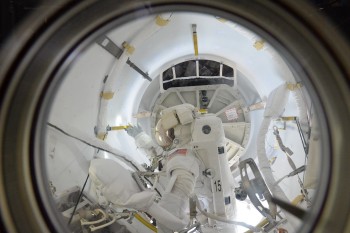
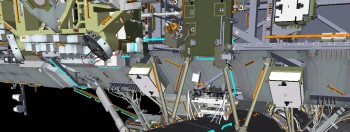

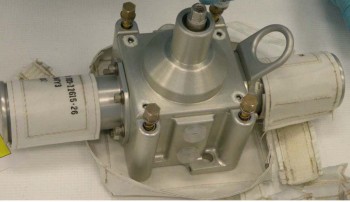
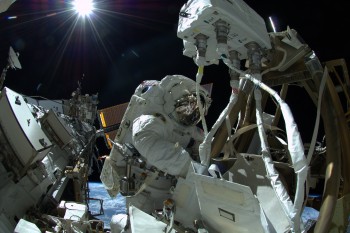
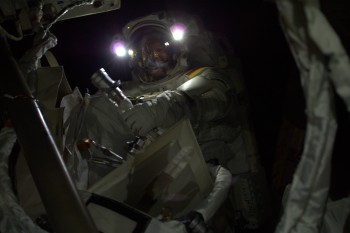
Discussion: 10 comments
With both EVA astronauts having the same forename will this cause difficulties re capcom communicating instructions to an individual spacewalker?
They will use their last names if any confusion could occur.
Tim,
You are FANTASTIC!
Hi Tim P,
As this will be your first spacewalk, I’m sure you’ll have a mix of emotions, lots of work ahead, I’m sure once back inside the ISS a well deserved rest, will watch this space walk with interest, look forward to your post spacewalk report and what you expected and experienced.
The task to be carried out would be relatively simple if carried out on an earth bound aircraft. As an ex aircraft technician I tip my cap to both Tims for this extraordinary task in space. Good luck, I hope all goes to plan.
64 – Good luck Tim P (Mav), ESA, and your wingman Tim K (iceman) on the 15th, you’ll be great, the first of your many space walks
Tim P best wishes for your up coming EVA. As an ex Navy Saturation Diver I can sort of relate to that feeling of being on the outside of the craft that keeps you alive. I would give anything to be in your shoes, do your work well and savour every moment. You are a great ambassador for Britain and a brilliant role model to our next generation – I can’t believe I am being so nice to a pongo!!!
Can I watch this afterwards or is it only being shown live?
Where can I watch?
Good luck from everyone at your old school. Everyone at Westbourne Primary will be watching – what an inspiration
Amazing spacewalk, what is the visor on your spacesuit for? Is it to protect your eyes from the sun?